BestReviews is reader-supported and may earn an affiliate commission. Details
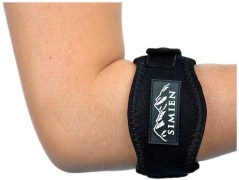
Tops our list for its durable construction and gel compression pad that delivers superior targeted pain relief.
Tops our list for its durable construction and gel compression pad that delivers superior targeted pain relief.
Crafted from high-quality materials, this will stand the test of time. Gel compression pad outperforms air-filled varieties, providing fast, effective relief and support. Easily adjustable with a Velcro strap for customizable sizing.
More expensive than others, but well worth it considering the quality and the extras.
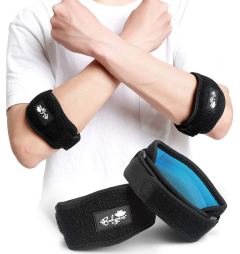
Designed to relieve forearm stress and protect the tendon from additional strain.
Designed to relieve forearm stress and protect the tendon from additional strain.
Made with durable, high-quality materials that ensure longevity. Lightweight and flexible construction allows for unrestrained movements. Equipped with a gel compression pad that alleviates fatigue. Comes with convenient adjustable Velcro straps that easily stick to anywhere on it.
Does not provide long-term pain relief. Some users found the fabric to be itchy.
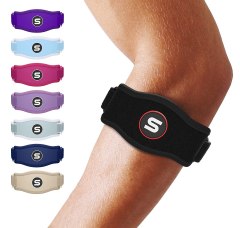
Features a compression pad that helps relieve forearm fatigue in addition to providing support.
Features a compression pad that helps relieve forearm fatigue in addition to providing support.
Fits forearms measuring 9 to 23 inches. Protects tendons from additional strain. Compression pad adds extra pressure to relieve pain and fatigue. Fastens with two adjustable hook-and-loop straps. Made of 75% neoprene and 25% nylon.
The hook-and-loop straps may wear out relatively quickly.
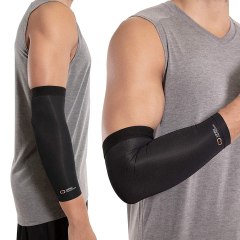
For those who prefer copper, this is an unparalleled option boasting high copper content.
For those who prefer copper, this is an unparalleled option boasting high copper content.
Lightweight and extremely comfortable to wear, even in warmer weather. Nylon and spandex blend offers excellent moisture-wicking performance. Infused with high levels of quality copper. Provides more flexibility than other sleeves. Easy to wash, and dries quickly.
The overall compression isn't the highest, and these sleeves may be more prone to stretching out.
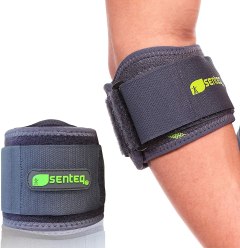
Wider with maximum stability and offers comfortable compression to treat pain relief.
Wider with maximum stability and offers comfortable compression to treat pain relief.
Wide strap provides good stability and support. Dual-layer design with an inner gel pad for target compression and promoting circulation. Medical grade with flexible, breathable fabric. Great for use while playing sports or gardening.
Because it’s wider than some, it does add more stability but can feel slightly more restrictive.

We recommend these products based on an intensive research process that's designed to cut through the noise and find the top products in this space. Guided by experts, we spend hours looking into the factors that matter, to bring you these selections.
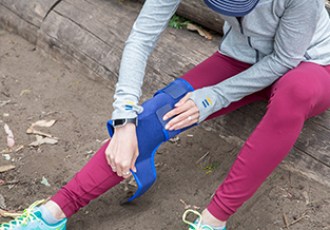

Tennis, golf, typing, basketball, and any number of other activities that involve the repetitive motion of the arm, elbow, and forearm can result in painful tennis elbow. This condition can prevent participation in favorite activities, and for some, it may limit the ability to work. Tennis elbow can gradually progress until treatment is needed, while at other times a specific injury can cause the condition to suddenly manifest. Either way, a solid tennis elbow brace is part of a well-rounded treatment plan.
Several types of braces are available, and many are highly effective in the right circumstances. The right one for you depends on the nature and severity of your injury. It also depends on which type is the most comfortable and convenient for you to wear.

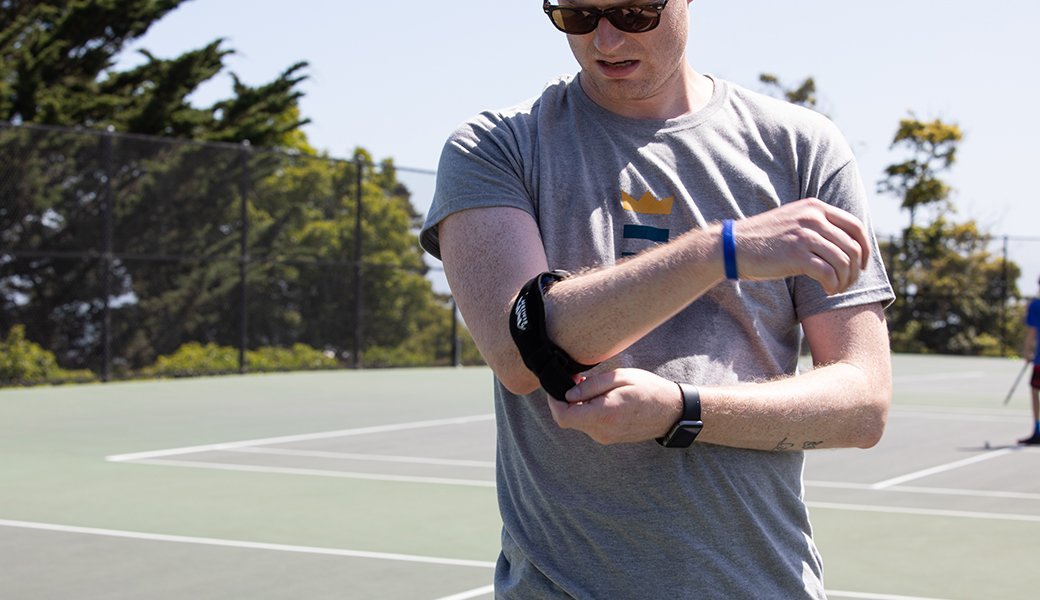
Not all tennis elbow pain results from playing tennis. The severity, type (sharp and shooting or dull and throbbing), and location of your pain should heavily influence your decision. If your pain is just starting, you might want to try a couple of different brace styles to find the one that works best for you. However, if your pain is severe and limiting your activity level, we suggest consulting your physician for treatment and brace recommendations because some brace styles work better for certain types of injuries.
Strap-style: These braces consist of a single strap that fits around the upper part of the forearm a few centimeters below the elbow. The strap has a pad that's held in place with a hook-and-loop fastener and applies direct pressure to the tendon. The pressure changes the strain on the affected tendon and reduces vibration. This type of brace allows you to adjust the pressure to your comfort level. It also allows more freedom of movement than compression sleeves, dual-support, or combination braces. Not all, but many of these are one-size-fits-all braces, which can be a problem if you're smaller or larger than average.
Dual support: These braces have two straps, with one attaching below and one above the elbow. They reduce mobility and comfort but are often used to immobilize the elbow area when an injury causes pain beyond regular tennis elbow. The pressure applied isn’t as targeted as that of a strap style, and this brace doesn't offer the range of motion or improved circulation that comes with a compression sleeve. However, it’s inexpensive and easy to take on and off.
Compression sleeve: This type applies pressure to the affected tendons while also supporting the entire elbow joint. Models with graduated compression apply even pressure across the joint and reduce pressure toward the sleeve openings. The materials used to make arm compression sleeves also help keep the joint warm, which can aid mobility and prevent pain while improving circulation. A sleeve offers slightly less mobility than a strap-style brace, but some people like the extra coverage and joint stability it provides.

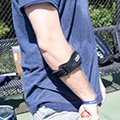
A sleeve with graduated compression applies even pressure over the elbow joint but gradually reduces pressure toward the ends of the sleeve so as not to cut off circulation. A sleeve without graduated compression would apply even pressure over the entire surface of the brace.
Seams are a common source of skin irritation because of the pressure necessary to treat pain. Heavy, rounded seams can dig into the skin. Look for flat-seam construction that limits localized pressure. The ends of a compression sleeve can also cause discomfort from uneven pressure. Look for sleeves with flexible seams at the openings and graduated compression to prevent circulation problems.
Unfortunately, it's hard to tell how comfortable a brace is until you try it on. Size, materials, and seam construction can all make a difference in how it feels. For example, people with sensitive skin may opt for a material other than neoprene, which can be irritating to the skin. Heavy seams pressing into the skin can also be a source of discomfort. Check for comfort features like flat seams and non-irritating four-way stretch fabric.
Neoprene is commonly used to make all kinds of braces because it’s flexible yet strong enough to offer stability. It’s used to make effective strap- and compression-style braces. However, it isn’t necessarily the best material on the market because it can cause skin irritation in some people, especially when used during athletics. High-end elbow braces use four-way stretch fabrics like nylon and nylon-like fabrics that move with the muscles but have better breathability than neoprene. On the downside, these braces tend to be expensive.
One-size-fits-all braces may be easier for manufacturers, but they don’t always result in the best option for you. If you’re of average size, a one-size-fits-all model will probably work. However, for the best compression and pain relief, models that come in small, medium, and large offer better fit and pain relief. A few of the more expensive braces come in as many as seven sizes for a more customized fit. Follow the manufacturer’s instructions and take careful measurements to find the brace that offers the best support for your frame and body size.
Some compression/strap combo braces have built-in stabilization pads that massage the elbow as you move. Others, usually dual-support models, limit the range of motion to reduce pain. A few strap braces have a dial that independently adjusts the pressure without the need to tighten the strap. That may save the fastener, but it doesn’t necessarily offer better pain relief. Your injury may or may not require stabilization. Your physician can tell you if you need a brace that has any of these extra features.
Braces aren’t known for their colorful patterns, but that doesn’t mean you can’t find one with a design that appeals to you. Black and gray with a complementary color are the most frequent options, though there are a few braces made in a neutral beige color.


Basic strap- and compression-style braces start at less than $15. Strap-style braces have a compression pad that must be placed over the affected tendon. The compression sleeves at this price point offer low-level compression and may not offer graduated compression.
Between $15 and $30 are strap-style braces with flat seams and compression braces that apply even pressure across the full elbow joint. Dual-support models may be found at this price, and some braces come two to a pack.
In the $30 to $50 range, the combination braces (both one and two pieces) and strap models with adjustable pressure dials start to show up. You might also see a dual-support model that can be used for hot or cold therapy.
The most expensive braces on the market top out at around $85 and could go higher as the technology advances. These models include four-way stretch fabric and compression sleeves with a built-in compression strap. They have built-in stabilization technology and can be found in a number of color choices.
Hand-wash and air-dry your elbow brace regularly. This is a general rule. You should always follow the manufacturer's instructions for cleaning and care.
Consult your physician about your tennis elbow. Tennis elbow typically results from overuse (chronic), though an immediate (acute) injury is possible, too. A brace relieves pain but doesn’t eliminate the symptoms of tennis elbow. Your doctor can recommend stretches and strengthening exercises to fully address the issue and potentially eliminate the problem.


A. These braces are designed for therapeutic use rather than while playing sports. However, they allow you to do hot or cold treatments while moving normally about your day.
A. The brace needs to put enough pressure on the tendon to change the way it functions when forces act upon it. While compression sleeves and straps need to be tight, they should never cut off your circulation, which can be noted by a tingling sensation or lack of feeling. Models that come in several different sizes provide better pressure customization than one-size-fits-all models.
A. Measurements are almost always based on a relaxed arm bent at a 90° angle. However, you should always check the manufacturer’s instructions before measuring or ordering.
Get emails you’ll love.
Learn about the products you’re wondering if you should buy and get advice on using your latest purchases.
